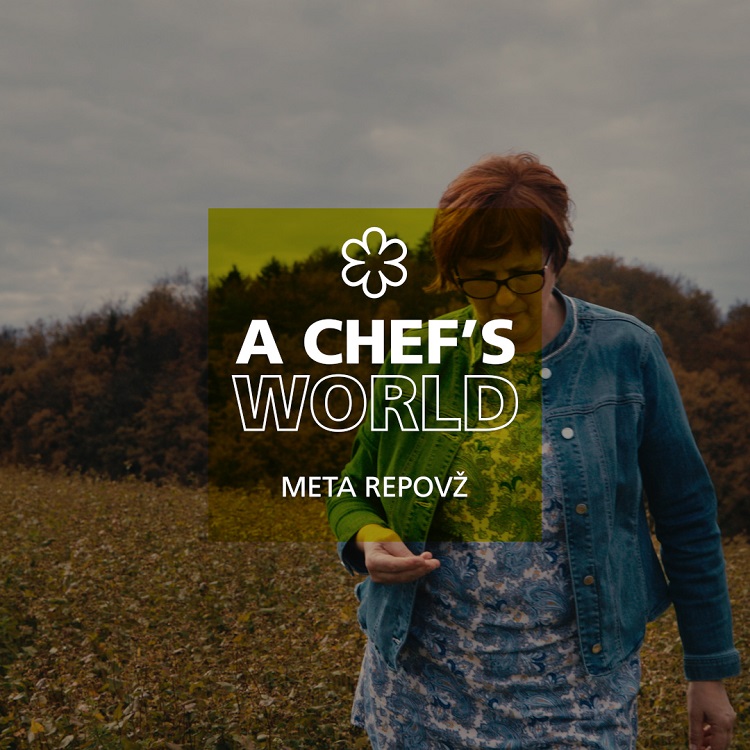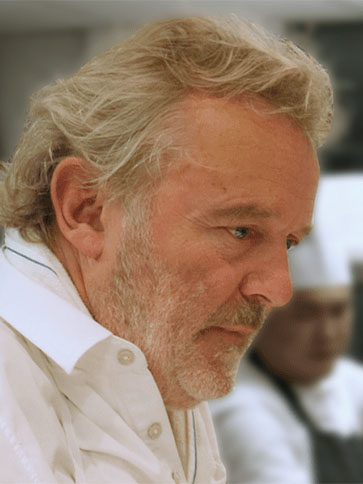A pot of ‘chilli’ plant, a bowl of ‘udon’ and a sweet-savoury glass-like disc - these are just some of the avant-garde dishes at at Iggy’s, a one Michelin-starred modern European restaurant at Hilton Singapore that look deceptively straightforward. That is until diners take the first bite and faces start to lighten up, eyebrows are eased and smiles break out.
Welcome to the whimsical world of Iggy’s head chef chef Aitor Jeronimo Orive, whose use of cutting-edge cooking techniques and kitchen technology have fuelled him to push the boundaries with creative dishes using seasonal produce that are mainly sourced from Japan.
When diners tuck into culinary creations at Iggy's, they immerse in a multi-sensorial experience that piques one's appetite and curiosity - from the crunch of a wafer-thin cracker to the oozing of a cold sauce from a spicy-looking parcel.
Technology is his secret kitchen weapon
For Orive, one of the cooking ethos that he stands firmly by is “making food that is simple and very tasty but has a lot of technique behind that you might not see.”
One way of doing so is through imaginative technology. “It means being able to create something unique that has not been done before or perfecting something,” he shares. “Techniques are usually good for standardising things so that they're always the same with no ups and lows.”
The Spanish-Australian chef attributes his focus on experimental techniques to his cooking background. Prior to his stint at Iggy’s, he has worked with a slew of boundary-pushing chefs. He has worked in two Michelin-starred Mugaritz restaurant in Spain, which is a renowned creative culinary powerhouse, the three-Michelin-starred The Fat Duck in Britain and one Michelin-starred Nerua Guggenheim Bilbao in Spain. Before uprooting to Singapore in 2016, he was part of the pioneering team behind Barbarossa Paco Roncero in Shanghai.

Spicing up one’s imagination
His technique-forward cooking mantra is epitomized in a starter that is simply known as Chilli. Hanging on a pot of chilli padi plant are plump ‘chillies’ that are made of moulded white chocolate shells, which are loaded with a tangy and chilli sardine sauce before being capped on with actual chilli padi stalks.
The idea was sparked when Orive saw chillies, an ubiquitous local ingredient, when he visited Tekka Market with his research and development chef. He utilised a technique that he had picked up from his Mugaritz days when he constructed walnut-shaped moulds from chocolate. Orive taps on his imagination to craft edible silicone moulds that take on the shape of chilli and fills the curvy parcels with a variety of creams, mousses and sauces.
Besides Chilli, another locally-inspired dish is the pork udon that is fashioned after bak kut teh, a peppery pork bone tea dish. Drenched in a jamon iberico stock are gelatinous-soft ‘noodles’ made from braised pork skin. Leveraging on one of his kitchen's gizmos, Orive uses a meat slicing machine to cut the chunk of braised pork skin into slender strips.
A visual surprise awaits diners as an ordinary bowl of noodles is stirred to reveal a purple broth as a dash of beetroot powder lies at the bottom of the bowl.

Surprising diners through textures
Much of the surprise that awaits diners at Iggy’s lies in the textures of the food. Orive remarks: “Textures are very important especially in fine dining because you always want that element of surprise something that people don’t usually eat."
Crispiness is sublimely captured in one of Orive’s seasonal snacks, Floral Petai Disc. The visually-arresting baked disc is made with kokko obulato, an edible Japanese paper that is made from potato starch, and a blend of sugars. The wafer-thin cracker is creative canvas to showcase his ingenuity and artistic eye. The exquisite botanical-inspired cracker, which is embellished with an artistic tapestry of petai, sakura ebi, seaweed and edible flowers, is a good example of an edible piece of art.
For Oxtail, the slow-cooked wagyu oxtail is sprinkled with earthy shaved truffles and dramatically served with ‘foie gras snow’ - by immersing foie gras mi-cuit in liquid nitrogen before the hardened chunk is smashed into shards and served with a dramatic trail of smoke. He explains: “Foie gras is very fatty and we didn’t want it to melt and disintegrate. With liquid nitrogen, we can retain the foie gras’ texture and have a play of both hot and cold food on a plate.”

Using technology to fuel the imagination
When it comes to showcasing creativity on a plate, Orive believes that time is not of the essence. He says: “In our creative process, we try not to put time boundaries on ourselves like we have to have something in a month or two months’ time. We try to play with the seasons and new products.”
Besides toying with ingredients in his kitchen, he turns his wealth of innovative culinary ideas into reality with his kitchen gizmos - a secret weapon of sorts for him.
“If you want to effect a change or use your imagination to craft something to get an end product from an idea or something that you’ve seen, you need technology to make it happen,” he says.


















